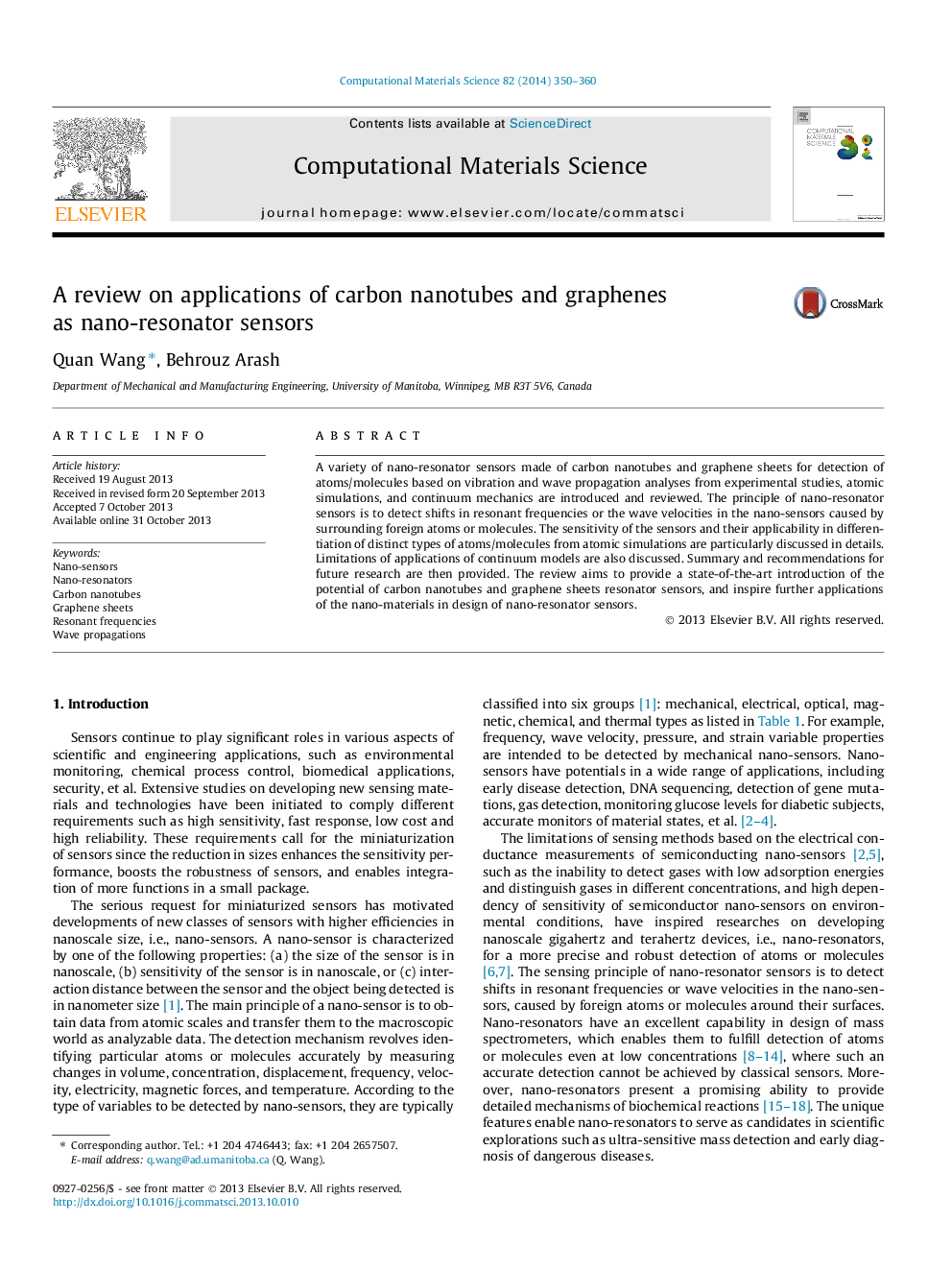| Article ID | Journal | Published Year | Pages | File Type |
|---|---|---|---|---|
| 7961126 | Computational Materials Science | 2014 | 11 Pages |
Abstract
A variety of nano-resonator sensors made of carbon nanotubes and graphene sheets for detection of atoms/molecules based on vibration and wave propagation analyses from experimental studies, atomic simulations, and continuum mechanics are introduced and reviewed. The principle of nano-resonator sensors is to detect shifts in resonant frequencies or the wave velocities in the nano-sensors caused by surrounding foreign atoms or molecules. The sensitivity of the sensors and their applicability in differentiation of distinct types of atoms/molecules from atomic simulations are particularly discussed in details. Limitations of applications of continuum models are also discussed. Summary and recommendations for future research are then provided. The review aims to provide a state-of-the-art introduction of the potential of carbon nanotubes and graphene sheets resonator sensors, and inspire further applications of the nano-materials in design of nano-resonator sensors.
Related Topics
Physical Sciences and Engineering
Engineering
Computational Mechanics
Authors
Quan Wang, Behrouz Arash,
